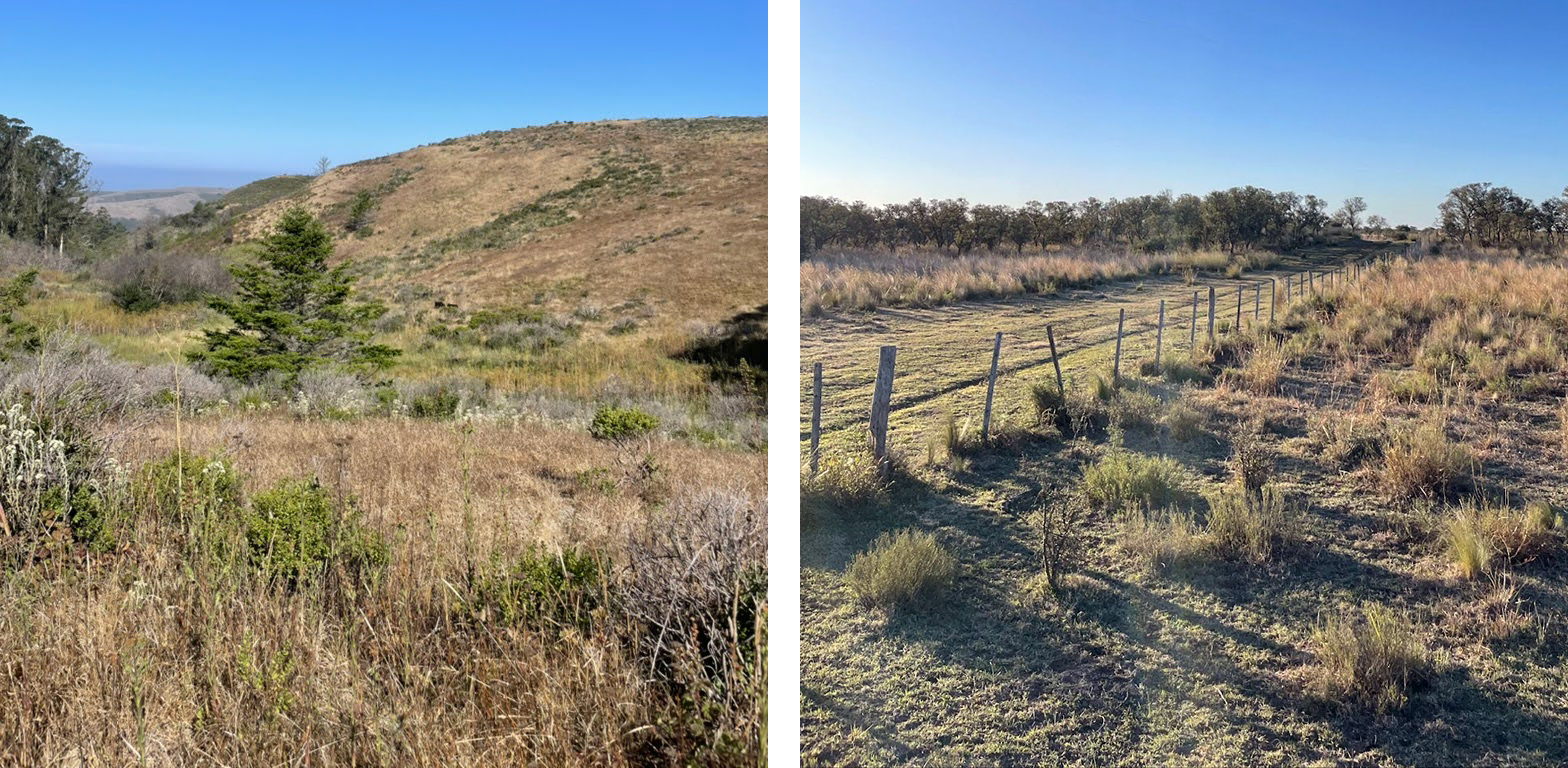In the past year, I have had the opportunity to work on two very different regenerative ranches: one far along in its journey, and one at the very beginning.
Regenerative Agriculture: An Argentinian Perspective

TomKat Ranch (left) and Yatagan (right): two similar, but very different ranches.
01/21/2025
By: Isabel Toldi
Isabel Toldi graduated from Boston University with a degree in Earth and Environmental Science and was a summer intern at TomKat Ranch.
In the past year, I have had the opportunity to work on two very different regenerative ranches: one far along in its journey, and one at the very beginning. Before coming to TomKat Ranch, I worked and learned at Yatagan, my family’s ranch in rural Argentina, which, in the past five years, has begun the transition from conventional to regenerative ranching.
As I left Argentina and began my internship at TomKat Ranch, I quickly came to understand that these would be two very different experiences. Prior to arriving in Argentina, I had done research on regenerative agriculture and believed in it. I knew about compacted soil, rotational grazing, and the mycorrhizal network but I had yet to interact with a ranch where regenerative agriculture was universally accepted and practiced. I arrived at TomKat Ranch with many questions. I was especially curious about the practicality of regenerative agriculture and the lessons I could take back to Argentina.
When comparing the two experiences, I easily identified two distinct attitudes towards regenerative agriculture, but to my surprise, several overlapping practices. In Argentina, I interacted with some ranchers who had long implemented direct drill seeding and a growing number who used cover crops to fix nitrogen and limit bare soil. Ranchers there are very interested in the chemical composition of their soil; the region’s notoriously limited organic material was always a prime conversation subject. However, these same individuals were skeptical about regenerative agriculture and often viewed the practices at Yatagan as ones that prioritized conservation over profit. They were resistant to some of the other key principles of soil health that other regenerative producers view as critical such as increasing plant and wildlife diversity, keeping living roots in the ground, and integrating livestock.
Comparing the two ranches helped me to see the larger conditions that make regenerative ranching possible. I further understood the ease with which TomKat Ranch was able to implement and test regenerative practices. At Yatagan, the barrier to implementation seemed to be much higher due to the political, economic, and climatic state in which Argentinian agricultural producers live and work. Argentina lacks much of the infrastructure that makes commercial ventures efficient. In addition, a severe drought and catastrophic financial conditions mean ranchers face intense pressure to extract all they can from the land.
Argentina is the sixth largest beef producer in the world with the highest per capita beef consumption in the world. Argentinian beef is typically grass-fed and grain-finished, with feedlot use steadily increasing, particularly in 2023 as a result of the drought. As feedlot use grows, ranchers transform the land previously used for grazing into cropland. These crops, including soybean products, corn, and wheat, make up Argentina’s largest exports. Over the past few years, the agricultural industry has suffered through several years of extreme drought, causing crop failure and forcing ranchers to move a greater number of cattle into feedlots.
While in Argentina, I engaged with the Consorcios Regionales de Experimentacion Agricola (CREA), which translates to Regional Consortiums of Agricultural Experimentation. I learned first hand how much Argentinian ranchers value collaboration, how intent they are on pursuing the best practices available and how the tight-margin ventures they run make any small deviation or failed innovation a big risk to their business. It made sense to me that the practices Argentinian ranchers are adopting are those with quick economic returns and proven effectiveness, reflecting their financial reality.
From a soil health perspective, however, farmers and ranchers in Argentina could benefit greatly from regenerative practices. And regenerative agriculture could support Argentinian ranchers and farmers by helping them build resilience to drought and climate change, decrease need for herbicides and fertilizers, and improve pasture health. Fostering healthy soils capable of retaining moisture, cycling nutrients, resist compaction and erosion, and support biodiversity are some of the many benefits of regenerative agriculture. Additionally, adaptive grazing allows for more efficient use of forage in each pasture and for livestock to contribute to soil health.
Is the transition to regenerative agriculture possible in Argentina without a shift in incentives? Moving towards regenerative agriculture may be a long journey, but Argentina has many of the qualities that could make it open to regenerative practices. Should this happen, it is likely that regenerative agriculture will look as different in Argentina as it already does across the U.S. Regenerative agriculture is not a one-size-fits-all solution: ranchers and farmers will find ways to adapt practices to their ecological, political, and economic context over time through experimentation. Through TomKat Ranch and Yatagan, I have worked with pioneering ranchers in their respective contexts, and am grateful for these experiences.